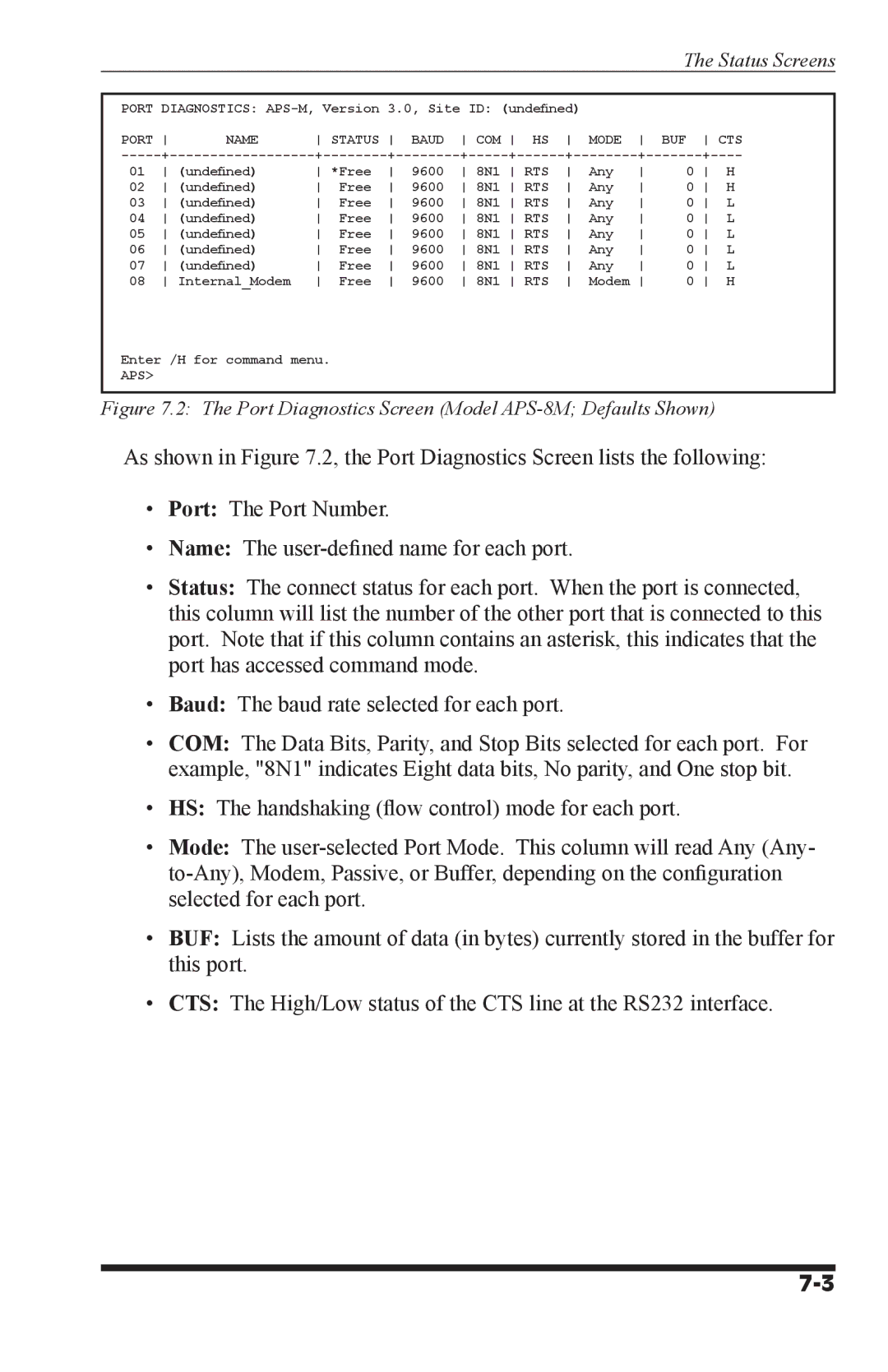
The Status Screens
PORT | DIAGNOSTICS: | 3.0, Site ID: (undefined) |
|
|
|
|
| |||||||
PORT | NAME | STATUS | BAUD | COM HS | MODE | BUF | CTS | |||||||
9600 | Any | 0 | H | |||||||||||
01 | (undefined) | *Free | 8N1 RTS | |||||||||||
02 | (undefined) | Free | 9600 | 8N1 RTS | Any | 0 | H | |||||||
03 | (undefined) | Free | 9600 | 8N1 RTS | Any | 0 | L | |||||||
04 | (undefined) | Free | 9600 | 8N1 RTS | Any | 0 | L | |||||||
05 | (undefined) | Free | 9600 | 8N1 RTS | Any | 0 | L | |||||||
06 | (undefined) | Free | 9600 | 8N1 | RTS | Any | 0 | L | ||||||
07 | (undefined) | Free | 9600 | 8N1 | RTS | Any | 0 | L | ||||||
08 | Internal_Modem | Free | 9600 | 8N1 | RTS | Modem | 0 | H | ||||||
Enter /H for command menu.
APS>
Figure 7.2: The Port Diagnostics Screen (Model APS-8M; Defaults Shown)
As shown in Figure 7.2, the Port Diagnostics Screen lists the following:
•Port: The Port Number.
•Name: The
•Status: The connect status for each port. When the port is connected, this column will list the number of the other port that is connected to this port. Note that if this column contains an asterisk, this indicates that the port has accessed command mode.
•Baud: The baud rate selected for each port.
•COM: The Data Bits, Parity, and Stop Bits selected for each port. For example, "8N1" indicates Eight data bits, No parity, and One stop bit.
•HS: The handshaking (flow control) mode for each port.
•Mode: The
•BUF: Lists the amount of data (in bytes) currently stored in the buffer for this port.
•CTS: The High/Low status of the CTS line at the RS232 interface.
